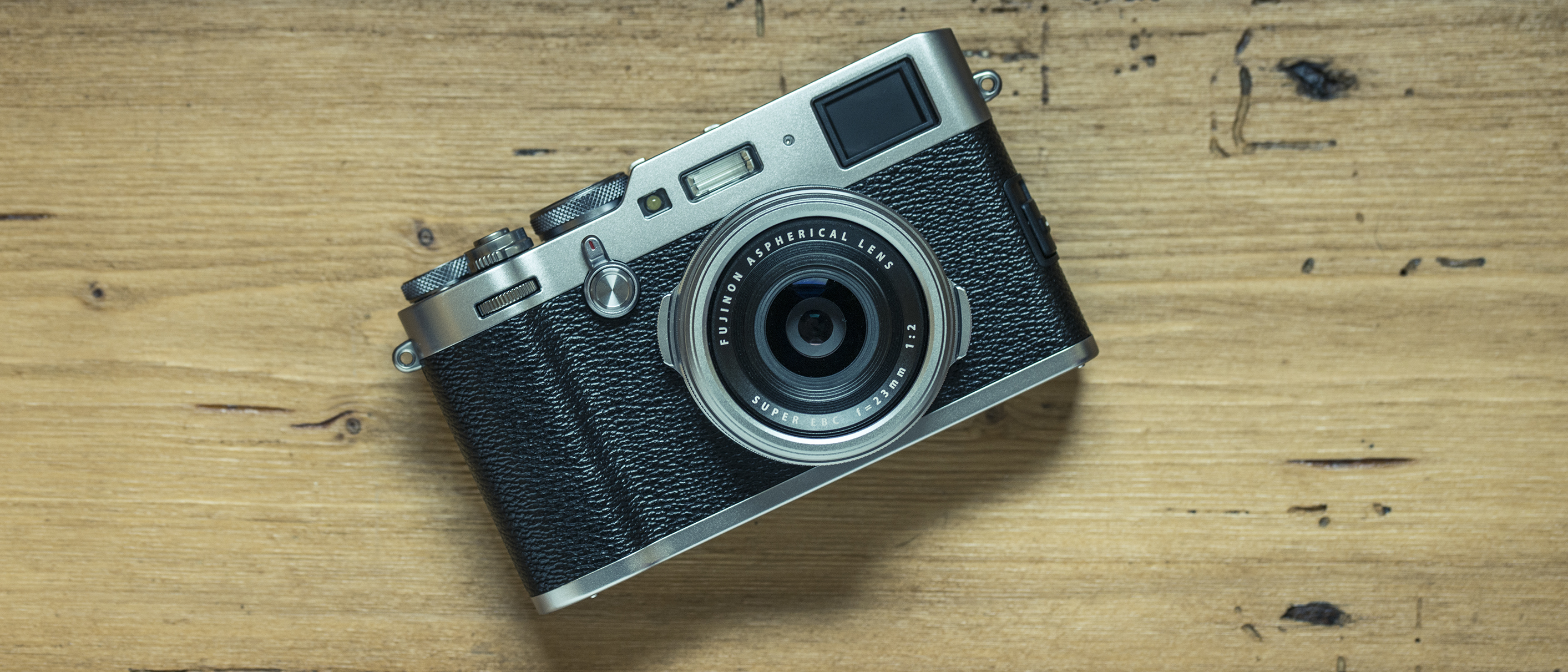Why you can trust TechRadar
Build and handling
- Magnesium alloy construction
- New joystick for setting AF point
- 469g
It may be the fourth generation of the camera, but Fujifilm hasn’t felt the need to tinker with the overall look of the camera too much. And why would it? The Fujifilm X100F is a gorgeous-looking camera in our opinion, and one that’s dripping with retro charm.
The X100F is a gorgeous-looking camera
Available in either the silver you see here or a more understated all-black finish, the X100F is a beautifully crafted camera, and has a real premium feel when you pick it up. The magnesium top plate and finely-machined exterior controls all enhance the shooting experience.
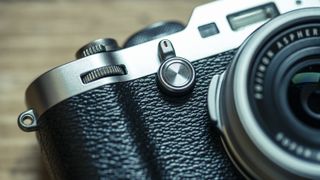
Fujifilm hasn’t simply scrubbed the T off the body and replaced it with an F though, making a number of changes and tweaks to the controls in an effort to bring even more refinement.
As we’ve seen in the previous generations, the top plate features shutter speed and exposure compensation dials, but both have been revised. The shutter speed dial now mimics the one found on the X-Pro2, offering dual control to change the ISO – this is done by lifting, turning and then dropping the dial to select the ISO you’re after. As we’ve experienced with the X-Pro2, this works fine when you’ve got the camera in your hand, but it's a faff when it’s raised to your eye.
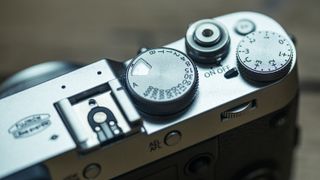
You can get around the faffing though – select ‘A’ and take advantage of one of the three Auto ISO modes on offer, or, with ‘A’ still set, use the new front command dial to flick through to your desired setting. You’ll have to head into the menu to jump between these two options, but it’s nice to be able to customize this key control.
The exposure compensation dial keeps the ±3EV range of the X100T, but adds a new ‘C’ setting on the dial. This lets you set compensation up to ±5EV using the camera’s new front command dial – and don’t worry if you’re using this to control ISO as well, as a quick depress of the dial will let you toggle between the two. As on the X-T2 and X-T20 we found adjusting exposure this way much easier than manually adjusting the nicely-machined dial, but that’ll come down to personal preference.
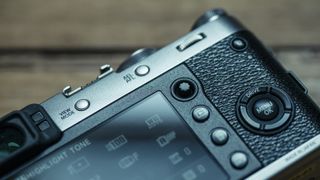
The back of the Fujifilm X100F is where perhaps the biggest changes have taken place. The controls that ran down the left-hand side of the display on the X100T have (mostly) been shifted over to the right. The reason? Fujifilm believes this re-arrangement will make one-handed control much easier.
Most welcome though is the addition of a small joystick/focus lever, which makes focus point selection so much easier and quicker than on previous models, especially now that there are so many more AF points to choose from (more on that shortly).
While one of the four-way control settings is hardwired to the X100F’s drive modes (it’s moved from a dedicated button near the viewfinder on the X100T), the level of customization, enabling you to tailor the X100F to your shooting habits, is impressive.
The remaining three points on the controller can all be assigned functions, as can the function button on the top-plate, AEL/AFL button, rear command dial and a new function button that’s embedded in the front of the camera’s viewfinder selector.
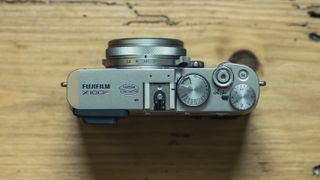
This new function button is initially set to select what the manual focus ring controls (when not being used for focusing); it's a new feature on the X100F, with the choice of White Balance, Film Simulation modes or Digital Teleconverter – a JPEG-only mode offering 50 and 70mm crop views.
The aperture ring encircles the lens, and while only whole stops are marked the lens can be adjusted in 1/3 stops. Set it to A and aperture will be taken care of by the camera; have the shutter speed dial set to A as well and the X100F will automatically set both.
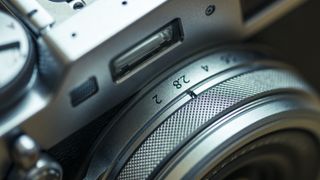
Autofocus
- 325-point AF
- Eye-detection AF
- Choice of 6 AF modes
The Fujifilm X100F takes advantage of the company's latest AF system, which we’ve already seen in the likes of the X-T2 and X-T20.
This means you get a broad 91 AF points to choose from, with a central 7x7 grid featuring phase-detection points, while the two 3x7 grids are contrast-detection only. This delivers good coverage, while there’s also the option to dive into the menu and opt for a 325-point grid if you really want that extra precision.
We found, however, that the X100F lent itself to the 91-point arrangement in use, either using the camera’s single-point or Zone AF modes (which use a 3x3 cluster of AF points) to acquire focus, as well as face detection for snaps and portraits.

Compared to the slightly creaky 49-point AF system used in the X100T, the Fujifilm X100F's setup is a much quicker proposition when it comes to focusing. The X100F locks on at a decent clip for most subjects when the central phase-detection points are used, even performing well when the light-levels drop.
AF speed can take a bit of a knock, though, when you shove the AF points out onto the furthest reaches of the frame when contrast-detect AF takes over, but stick to the central 49 phase-detect points and you’re onto a winner.
Current page: Build, handling and AF
Prev Page Introduction and key features Next Page Performance and image qualityPhil Hall is an experienced writer and editor having worked on some of the largest photography magazines in the UK, and now edit the photography channel of TechRadar, the UK's biggest tech website and one of the largest in the world. He has also worked on numerous commercial projects, including working with manufacturers like Nikon and Fujifilm on bespoke printed and online camera guides, as well as writing technique blogs and copy for the John Lewis Technology guide.

Would you pay $2000 for the most extravagant laptop of 2024? GPD's double foldable convertible laptop goes on sale — with world's fastest mobile CPU and even an OCuLink connector

I cheated on my wired headphones with these JLab Bluetooth earbuds, and they're a steal for Black Friday

The Samsung Galaxy Watch Ultra crashes to a record-low price for Black Friday
